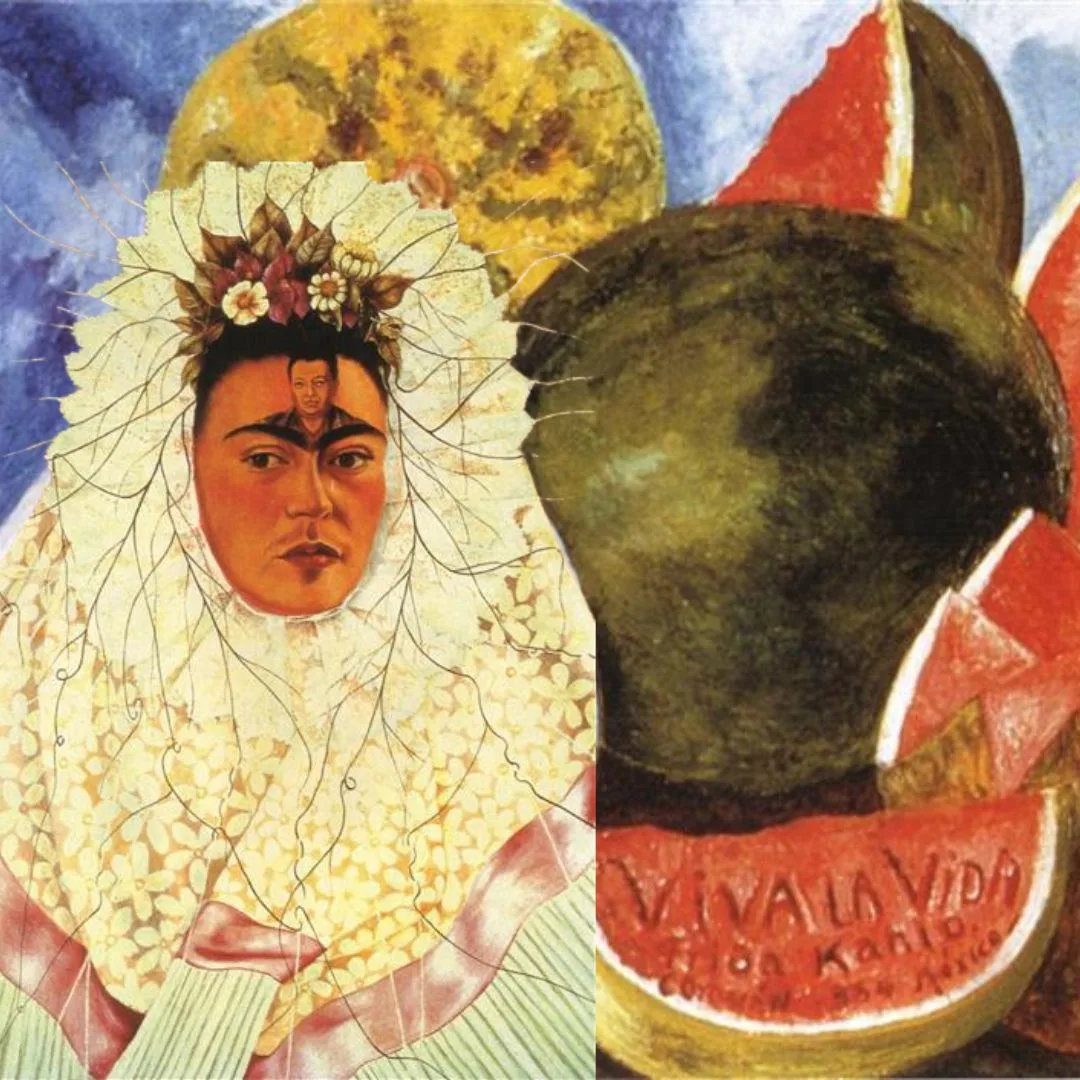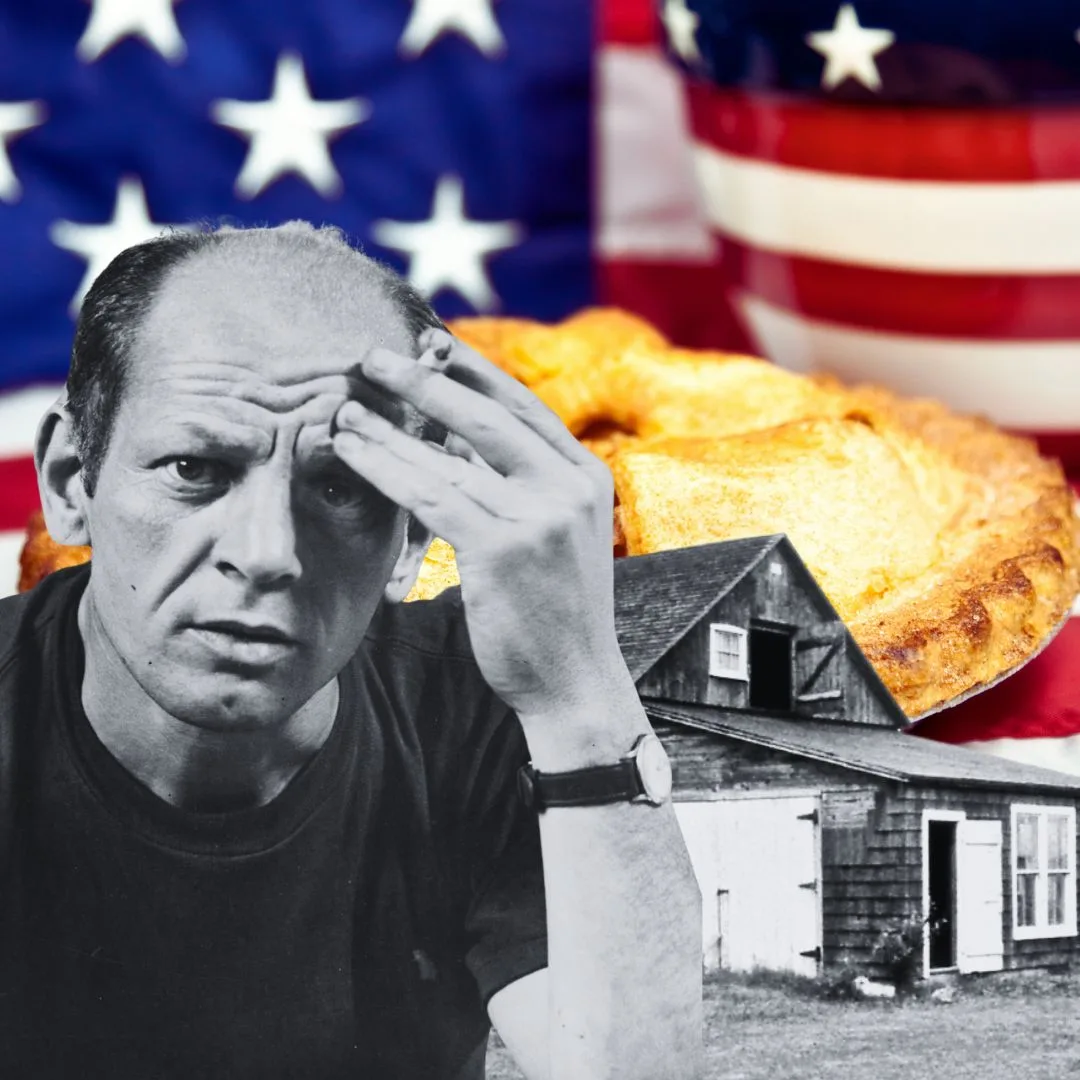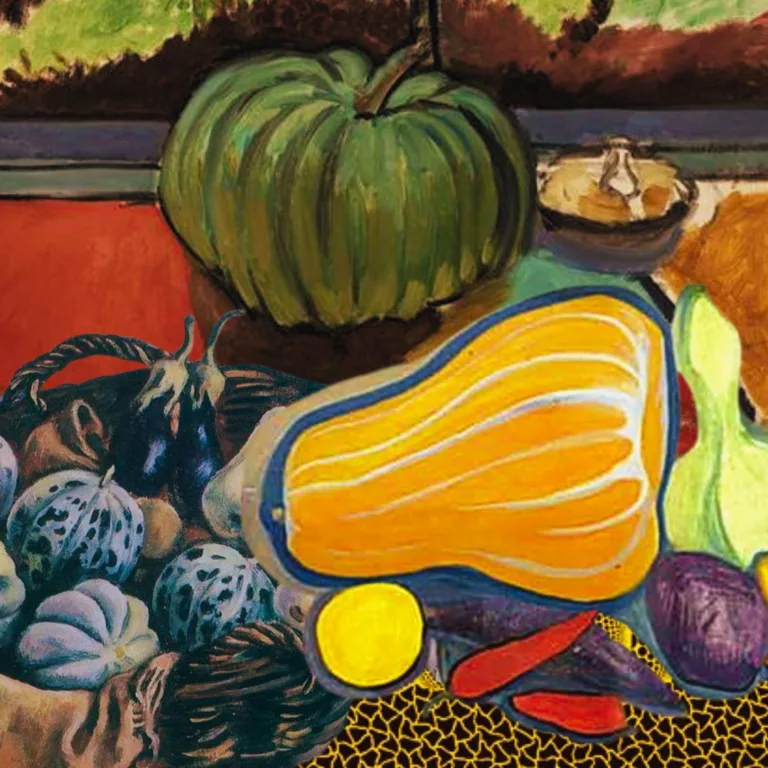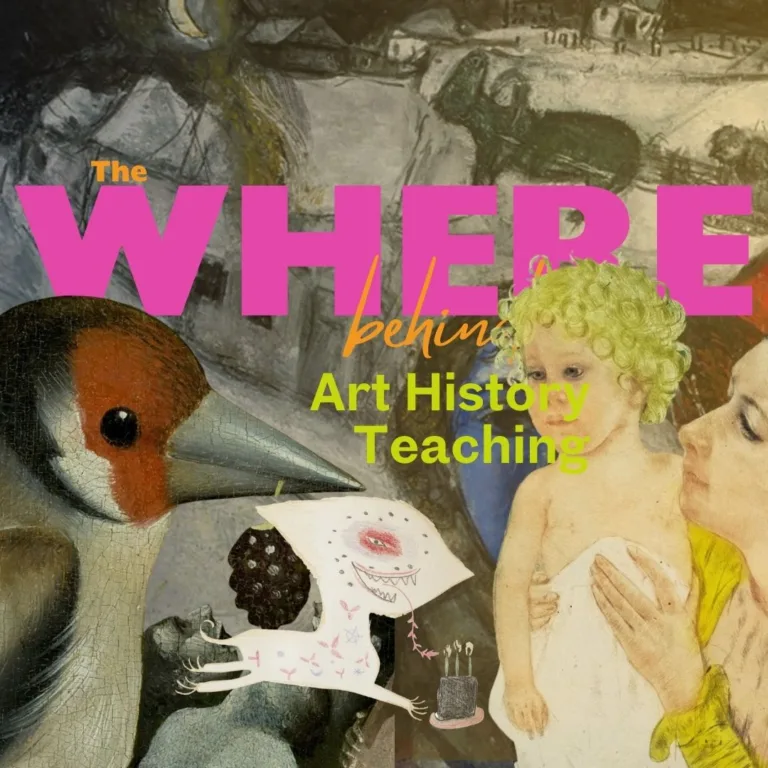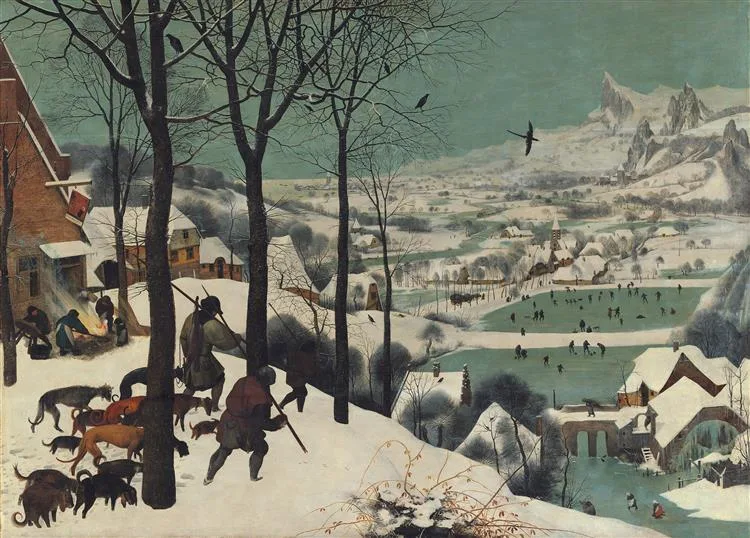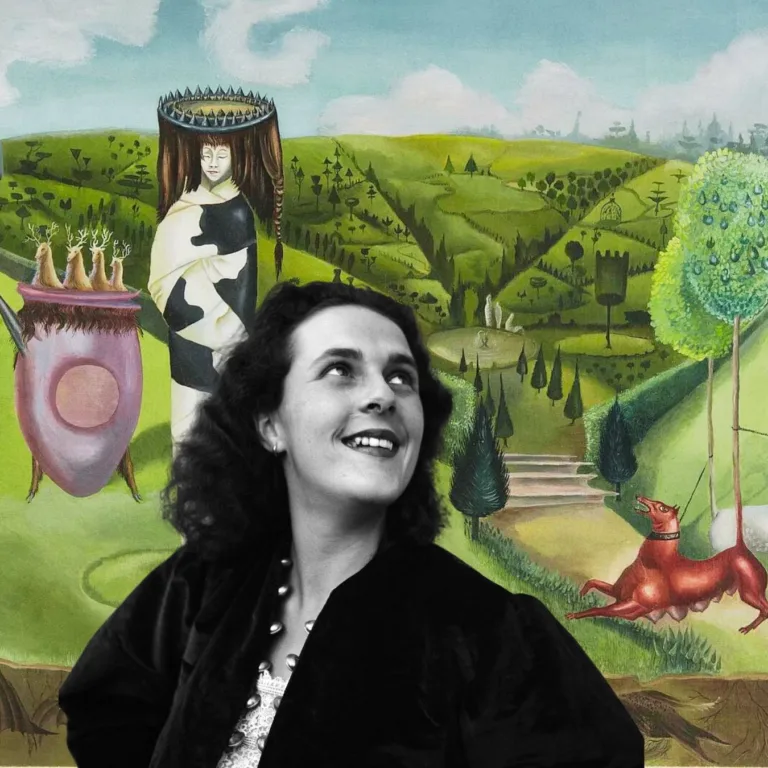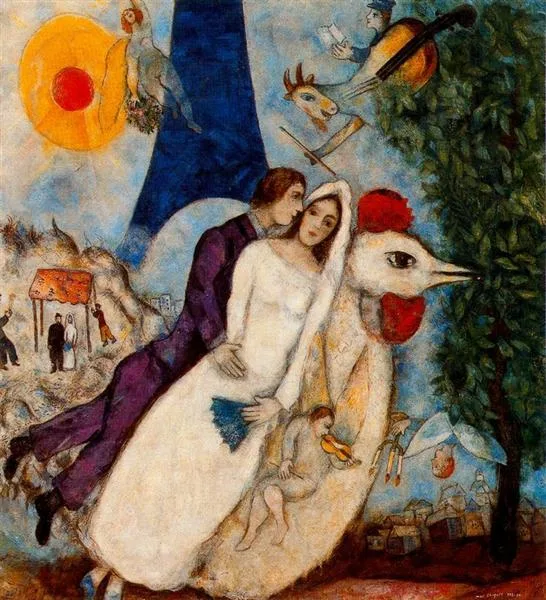Frida Kahlo’s Kitchen: The Foods, Flavors, and Stories from Casa Azul
In her final painting, Viva la Vida, Frida Kahlo didn’t depict her signature self-portraits or symbolic representations of her pain. Instead, she chose to paint a still life of watermelons—vivid, bold, and bursting with color. Across one of the melons, in striking red, she scrawled the words Viva la Vida—“Live the Life.”
Watermelons, with their vibrant hues and refreshing sweetness, hold a special place in Mexican culture. They’re often eaten during Día de los Muertos, symbolizing both the sweetness and ephemerality of life. Despite a life filled with hardship, illness, and emotional turbulence, Frida’s last artistic statement was one of defiance and celebration—an ode to life itself.
Read also:
- The Best Picture Books about Mexican Culture
- 10 Iconic Mexican Artworks Kids Should Know | All About Mexico Art Unit

Hi there — before we continue:
I’d love to build a small community on Instagram and try out some short-form content over there. It would mean a lot if you could hop on IG and follow me @art_sprouts_art.
Also, what kind of content would you like to see from me next?
Drop a comment below or send me a DM on Instagram to let me know!
Food, for Frida, was never just sustenance. Much like her art, it was a reflection of her identity, her heritage, and her tenacity. In the kitchen, as on the canvas, she celebrated her Mexican roots, using flavors and ingredients as a medium of self-expression. Through food, she found a way to celebrate life, even in the face of overwhelming pain.
Read also:
- God’s Eye Craft for Kids: A Fun and Easy Mexican Art Lesson
- Mariachi Skulls & Día de los Muertos: A Creative Woodblock Printing Project for Kids
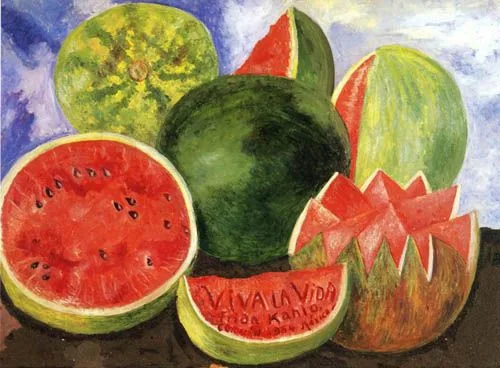
Frida’s Struggle Between Two Worlds: Mexican Tradition and Gringa Influence
Throughout her life, Frida navigated the tension between two opposing worlds. As her husband, Diego Rivera, became internationally renowned, the couple found themselves spending significant time in the United States. From New York’sbustling art scene to Detroit’s industrial landscape, they experienced a life of opulence, attending formal dinners with the American elite. Yet, Frida remained disconnected from this “gringa” world.
She loathed the blandness of American cuisine, often referring to the U.S. as “Gringolandia.” The sterilized formality of their meals felt hollow compared to the lively, flavorful world of Mexican food she adored. She missed the earthy flavors of home—the fresh tortillas, rich mole, and the smell of street food in Mexico City.
Food became a way for her to resist the cultural disconnection she felt. Whenever possible, Frida recreated the vibrant, flavorful dishes of her homeland, using food to reconnect with the Mexico she cherished. It was, in many ways, a quiet rebellion against the foreign influences pressing in on her.
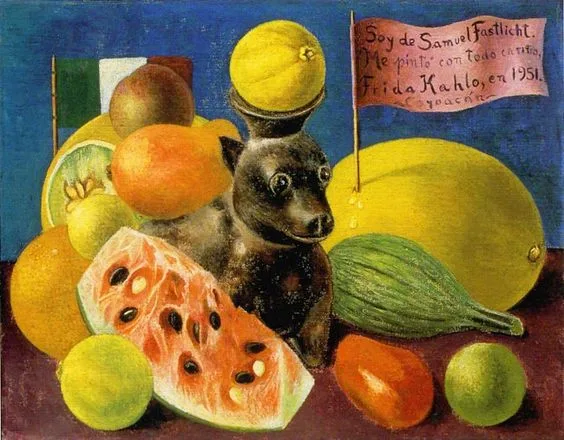
While Diego was enamored by the American art scene, Frida yearned for the simple, vibrant life of Mexico. This tension between worlds often found its way into her art. In Self-Portrait as a Tehuana, for instance, Frida depicts herself dressed in the traditional garb of Mexico’s Isthmus of Tehuantepec, reasserting her identity amidst a world trying to reshape her.
Food, like her art, was a way of reclaiming her heritage.
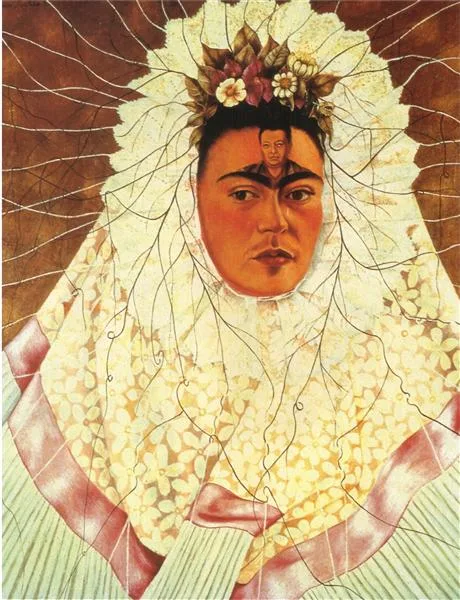
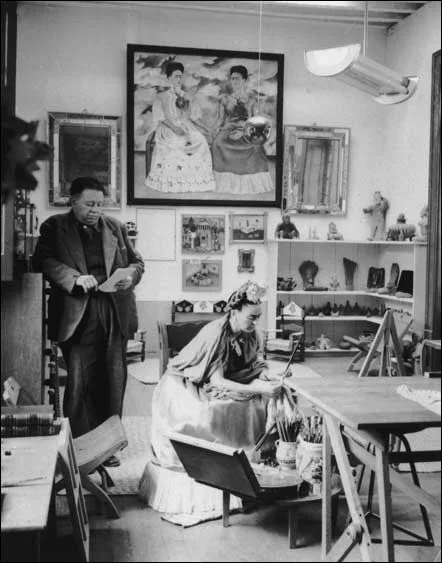
Frida’s Kitchen: A Creative Space Like Her Studio
Back home in Mexico, Frida’s beloved Casa Azul (The Blue House) stood as a vibrant reflection of her soul. Located in the quiet Coyoacán neighborhood of Mexico City, Casa Azul was an oasis of color and life. The bright cobalt blue walls contrasted with the lush greenery of the garden, where tropical plants thrived and pre-Columbian sculptures stood watch.
But perhaps the most significant space within this iconic home was the kitchen.
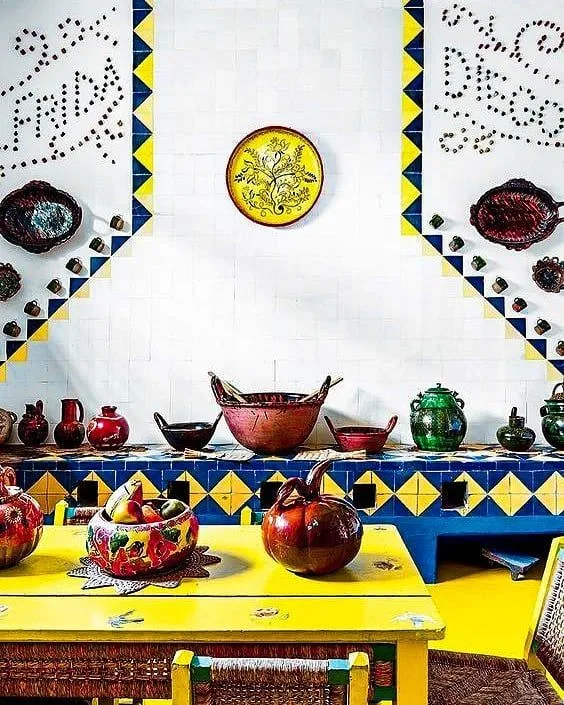
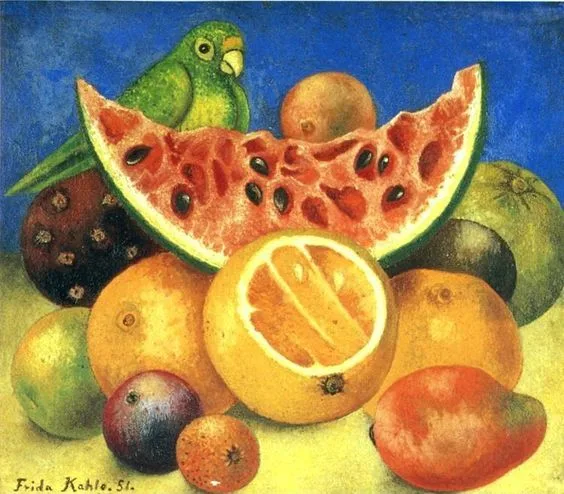
Frida’s kitchen wasn’t just a room for preparing meals—it was an extension of her creative self. With its bright yellow walls, traditional Mexican pottery, and hand-painted tiles, the kitchen pulsed with the same energy that infused her art. Shelves were lined with earthenware pots, molcajetes (stone grinders), and comals (flat griddles), all part of the traditional Mexican culinary toolkit.
For Frida, cooking was a form of creation, as essential and artistic as painting on canvas. Here, she transformed raw ingredients—chiles, avocados, corn—into meals that nourished not just the body, but the soul.
Much like her paintings of still lifes—Weeping Coconuts, Pitahayas, Fruit of Life—her kitchen reflected her fascination with food’s physicality and its deeper symbolic meanings. Fruits and vegetables, their vibrant colors and varied textures, often appeared in her work, not just as objects of beauty but as metaphors for life, fertility, and the cycles of nature.
In her kitchen, Frida turned food into a medium of artistic and cultural expression, where every meal told a story of her connection to Mexico.
Frida’s Favorite Recipes: A Love for Bold Mexican Flavors
Frida’s passion for traditional Mexican cuisine was well-known, and her cooking reflected the same boldness that characterized her art. She had a particular love for mole, a rich and complex sauce made from a symphony of ingredients—chiles, chocolate, spices.
Preparing mole was no small task, requiring time and patience, but Frida embraced it, as she did with many other traditional dishes. Tamales, wrapped in delicate corn husks, were another favorite, often served at the large gatherings she and Diego hosted at Casa Azul.

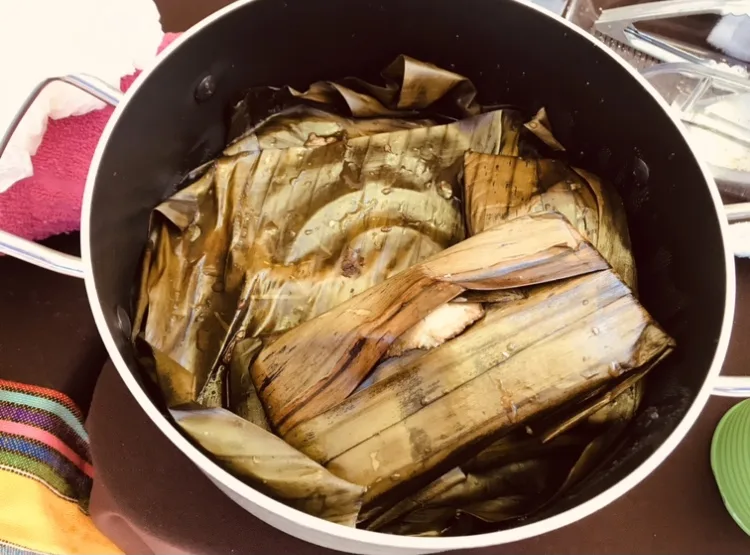
Her love for ceviche, a dish that combines raw seafood with lime, cilantro, and chili, also spoke to her connection with the coastal flavors of Mexico.
Frida wasn’t just an eater—she was a cook, often preparing these dishes herself for friends and family. These meals were her way of staying rooted in the vibrant, earthy world of Mexican food, even as the world outside was shifting.
Recipes attributed to Frida, from her beloved Chiles en Nogada (stuffed poblano chiles with walnut sauce) to her simple, comforting tortillas, give us a glimpse into the flavors she loved and the life she led.
These dishes weren’t just food on a plate—they were a tribute to the rich cultural heritage she carried with her, wherever she went.
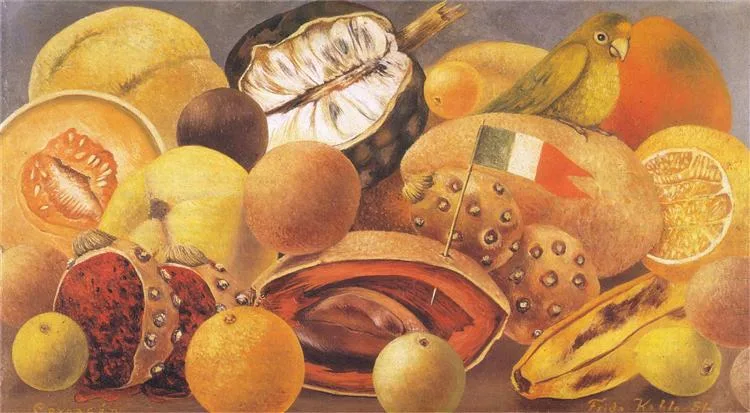
Food, Celebration, and Art at Casa Azul
Casa Azul wasn’t just a home for Frida and Diego—it was a meeting place for artists, intellectuals, and political revolutionaries.
And at the center of these gatherings was always food. Frida loved to host, bringing people together around a table full of traditional Mexican dishes. These meals were as lively as her artwork—full of bold flavors, laughter, and conversation. The kitchen became a hub of activity, where food, politics, and art merged into one.
Frida and Diego’s fiestas were legendary. They would serve everything from tamales and mole to pulque and tequila. These were not just meals; they were celebrations of Mexican culture and life.
Food, in this sense, became an extension of Frida’s artistic expression. It was a way of connecting with friends, nourishing the body and spirit, and celebrating the richness of her heritage.


In works like Still Life with Parrot and Flag, Frida’s love for food and its symbolic power is clear. Fruits, with their rich colors and textures, take on a life of their own, symbolizing not just nourishment but joy, sensuality, and the ever-present tension between life and death—a theme that runs through all of Frida’s work.
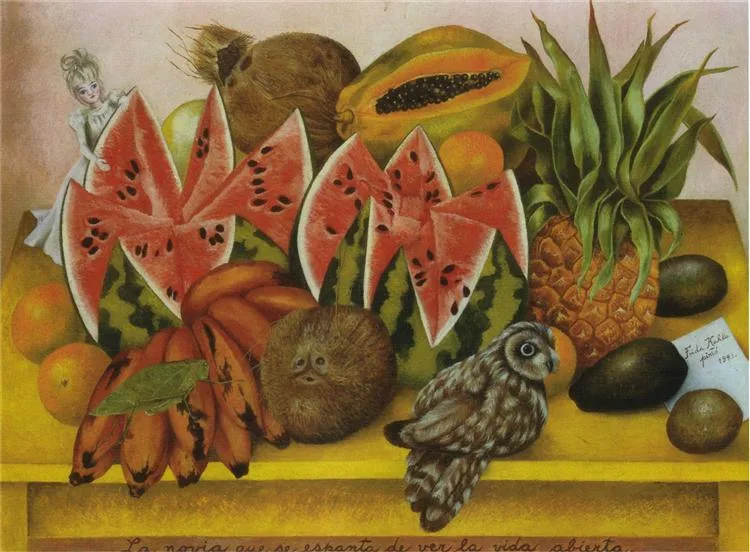
Frida’s Life Through Food – A Celebration of Mexico
Frida Kahlo’s relationship with food went far beyond the table. It was a connection to her identity, a way of celebrating her Mexican heritage, and a form of creative expression. Just as she painted her pain and joy on canvas, she infused her cooking with love, culture, and memory.
The kitchen, much like her studio, was a space where she could express herself fully—where the simple act of preparing a meal became an artistic ritual.
Today, Casa Azul’s kitchen remains a preserved testament to this aspect of Frida’s life. Visitors can walk through the space, now part of the Frida Kahlo Museum, and imagine her cooking there, surrounded by the sounds, smells, and textures of Mexico.
Her recipes, passed down through generations, continue to inspire cooks around the world, much like her paintings inspire artists. Through her art and her food, Frida Kahlo lives on—a vibrant, rebellious spirit who embraced life in all its flavors.
Save for Later:

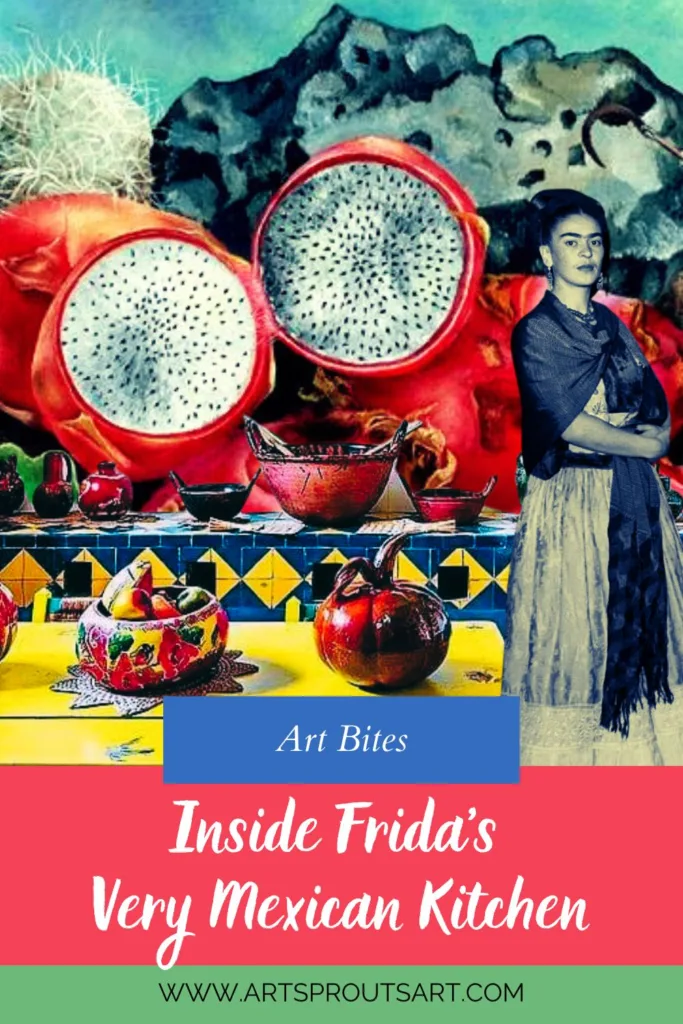
Read also:
Inside Jackson Pollock’s American Kitchen
Explore Jackson Pollock’s love for simple American food, a quiet tradition that connected him to his…
Introducing Art Bites: A Journey Through Artists and Their Favorite Foods
What did Frida Kahlo cook in her vibrant kitchen? How did Salvador Dalí turn dinner into surrealist …
Frida Kahlo’s Kitchen: The Foods, Flavors, and Stories from Casa Azul
Step into Frida Kahlo’s kitchen at Casa Azul and uncover how her favorite Mexican dishes, like mole …

